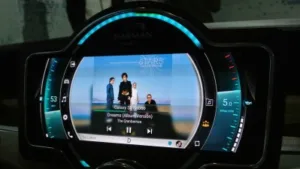Whenever one company merges with or devours another, it predicts that a cornucopia of synergistic value will result. More often than not, it doesn’t, but since Samsung completed its acquisition of Harman in March of last year, the companies have worked hard to combine Samsung’s display expertise with Harman’s knowledge of advanced automotive systems (Fig. 1).

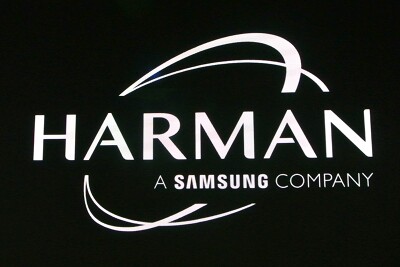 1. The synergy of Samsung’s acquisition of Harman is found in more than the new logo. (Photo: Ken Werner)
1. The synergy of Samsung’s acquisition of Harman is found in more than the new logo. (Photo: Ken Werner)
As seen at Harman’s by-invitation-only exhibit at the Hard Rock Hotel and Casino during CES, this cooperation has produced developmental systems incorporating OLED and local-dimming QLED displays, both separately and in combination. As Harman’s Tom Rivers put it, the company is bringing consumer electronics technology into automotive systems as Harman expands its advanced driver assist systems (ADAS)and security offerings.
On display was a Maserati with Harman 28-inch QLED local-dimming infotainment display and OLED instrument cluster (Fig. 2). Rashmi Rao, Harman Senior Director of Advanced Systems and User Experience, explained that for a high-end car like the Maserati, Harman selected the best-performing display technology for the critical instrument cluster, while the large QLED display still offers very good performance at a significantly lower cost than OLED. Rao commented that the QLED does a good job of integrating visually with the OLED. A conventional LCD would present an obvious visual mismatch with the OLED. The system in the Maserati was fully functional but is not yet in a shipping automobile.
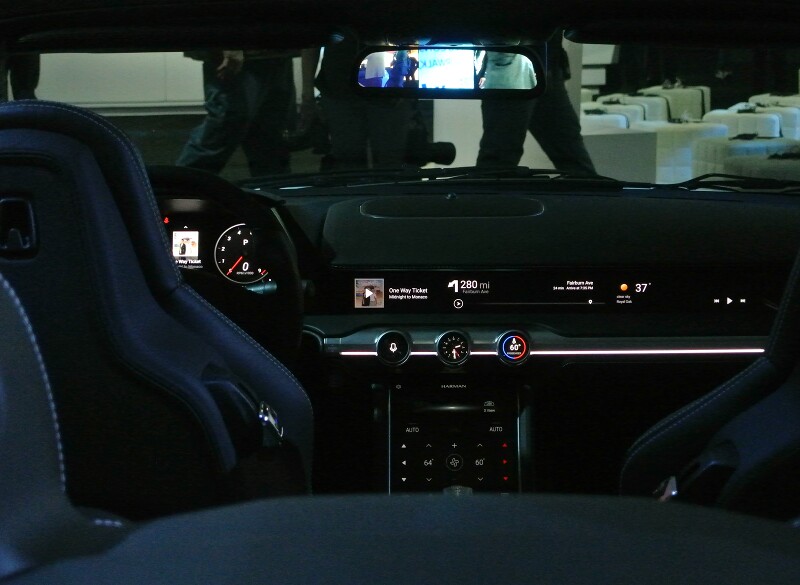 2. Car by Maserati, display and control system by Harman, displays by Samsung. The instrument cluster is OLED, and the 28-inch infotainment display is a local-dimming QLED. (Photo: Ken Werner)
2. Car by Maserati, display and control system by Harman, displays by Samsung. The instrument cluster is OLED, and the 28-inch infotainment display is a local-dimming QLED. (Photo: Ken Werner)
A high priority for Harman and other Tier 1 suppliers is the way their clusters and infotainment systems integrate with other systems. The Maserati system can customize interior lighting, integrate Bixby (and/or Alexa and Google), and can allow the driver to interrogate the car by voice. The system can check the owner’s schedule, check the dealers schedule, and set up a service appointment, all through the voice interface. Other Tier 1 suppliers are offering a similar feature.
Harman also showed a QLED instrument cluster and infotainment display integrated in a single unit for the Mini (Fig. 3). Cluster and infotainment are driven by the same controller, which simplifies the system, reduces power consumption, and saves weight. The unit incorporates a smart surface beneath the display, and permits control from contextual knowledge and the steering wheel. The system integrates Android Automotive with the smart cluster and provides cordless phone charging. With this system, Harman is “revolutionizing the entry-level cockpit,” said Rao.
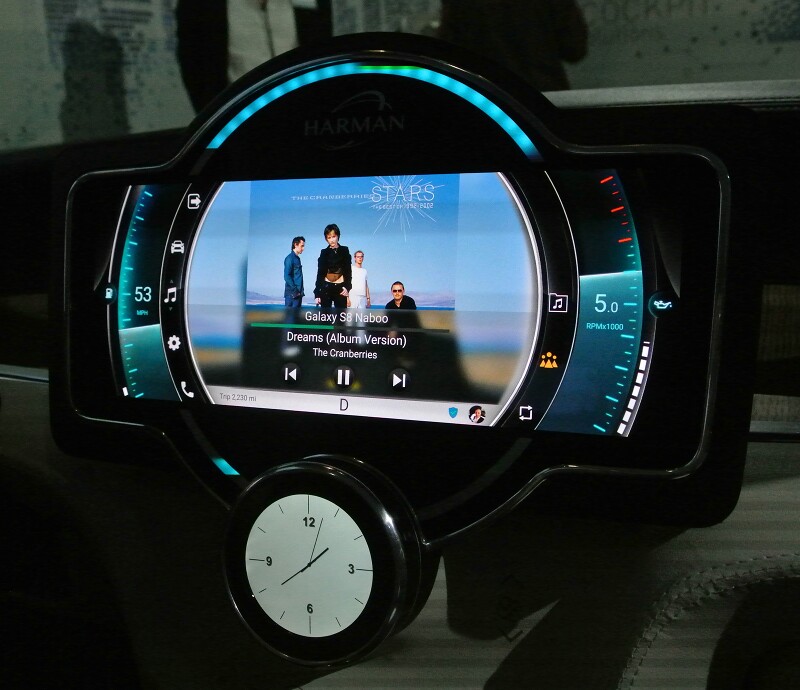 Harman designed this demonstration QLED cluster for the Mini to combine instrumentation (in the outer ring) and infotainment in the center. The user can change the infotainment part of the display but not the instrumentation part. The secondary display, showing a clock in the photo, changes content as the outside ring is turned. (Photo: Ken Werner)
Harman designed this demonstration QLED cluster for the Mini to combine instrumentation (in the outer ring) and infotainment in the center. The user can change the infotainment part of the display but not the instrumentation part. The secondary display, showing a clock in the photo, changes content as the outside ring is turned. (Photo: Ken Werner)
Harman also used a QLED display for a concept it called a QLED MoodRoof (Fig. 4), which is part of an audio and environmental system called Moodscape. Moodscape is intended to provide a multi-sensory environment that will keep you relaxed (or stimulated) while your autonomous car of the future drives itself to your destination. Ken Werner
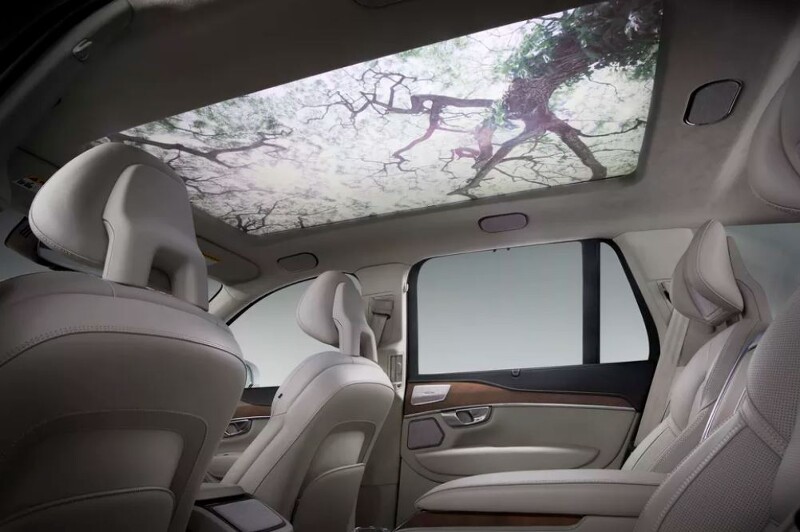 4. The QLED Moodroof concept changes the displayed content along with the audio from the sound system. The intended application is autonomous vehicles. (Photo: Harman)
4. The QLED Moodroof concept changes the displayed content along with the audio from the sound system. The intended application is autonomous vehicles. (Photo: Harman)
This article originally appeared for subscribers to our Mobile Display Monitor report in our CES report.
Ken Werner is Principal of Nutmeg Consultants, specializing in the display industry, manufacturing, technology, and applications, including mobile devices, automotive, and television. He consults for attorneys, investment analysts, and companies re-positioning themselves within the display industry or using displays in their products. He is the 2017 recipient of the Society for Information Display’s Lewis and Beatrice Winner Award. You can reach him at [email protected].

